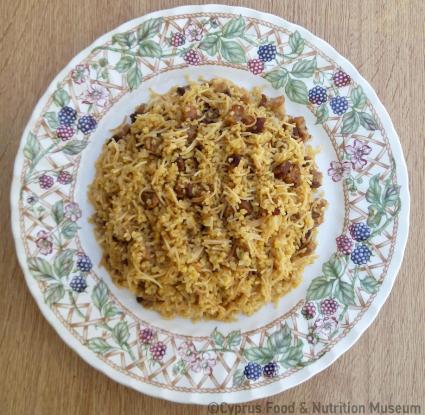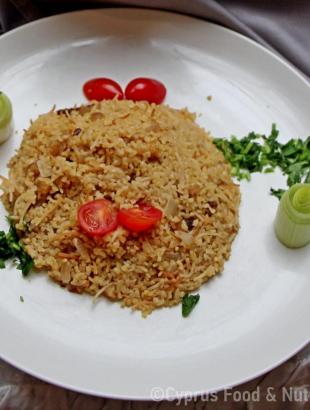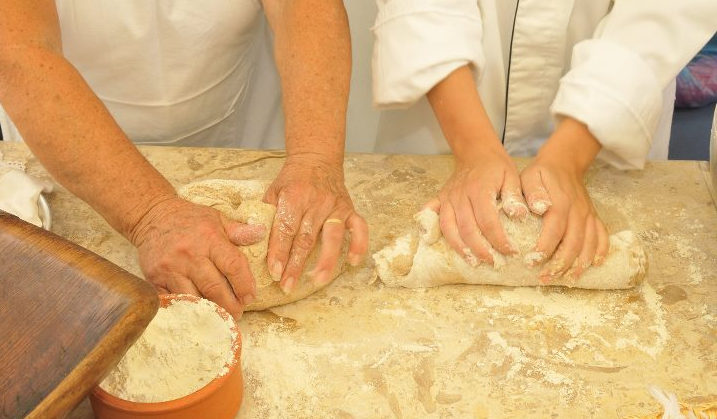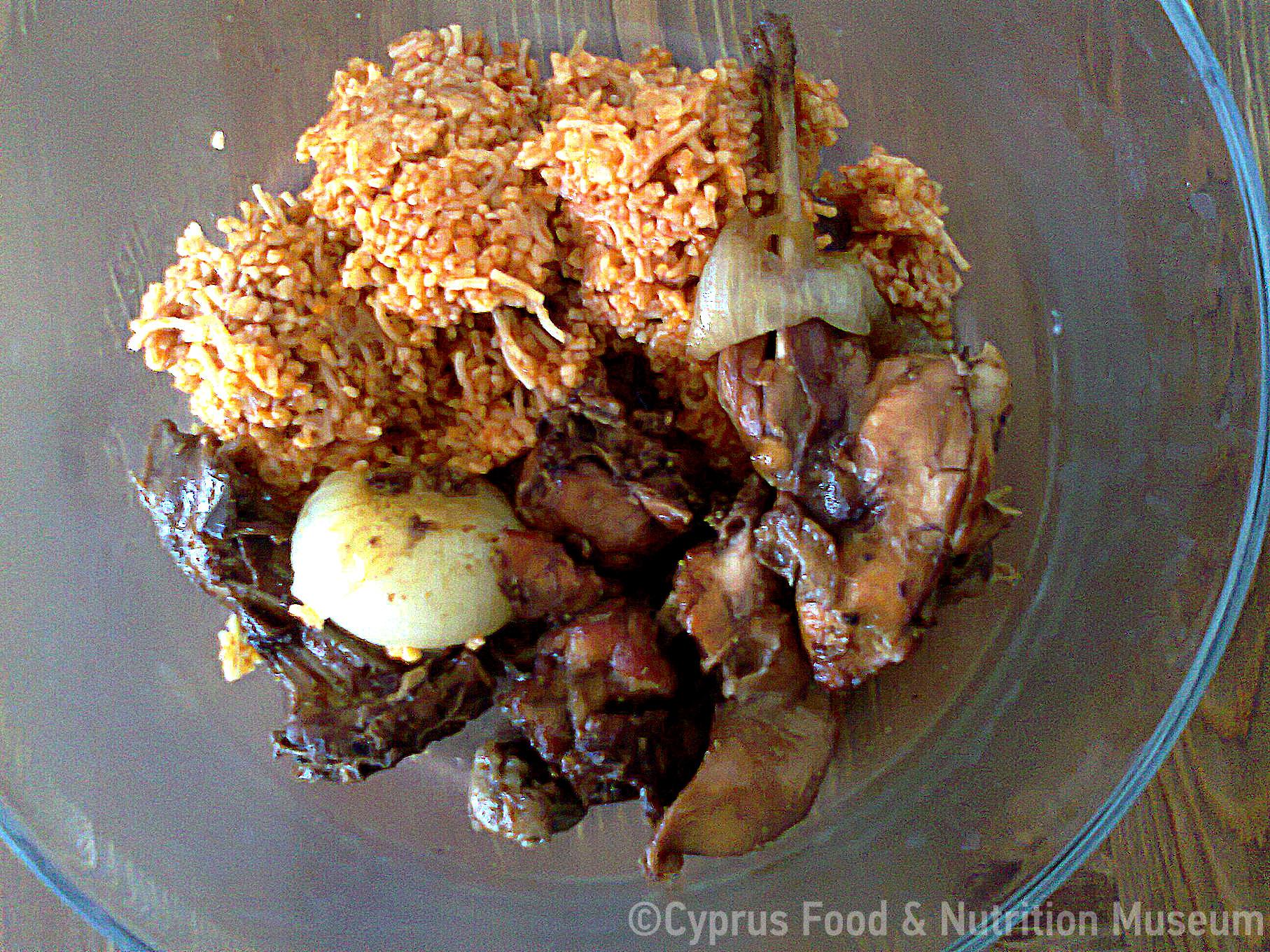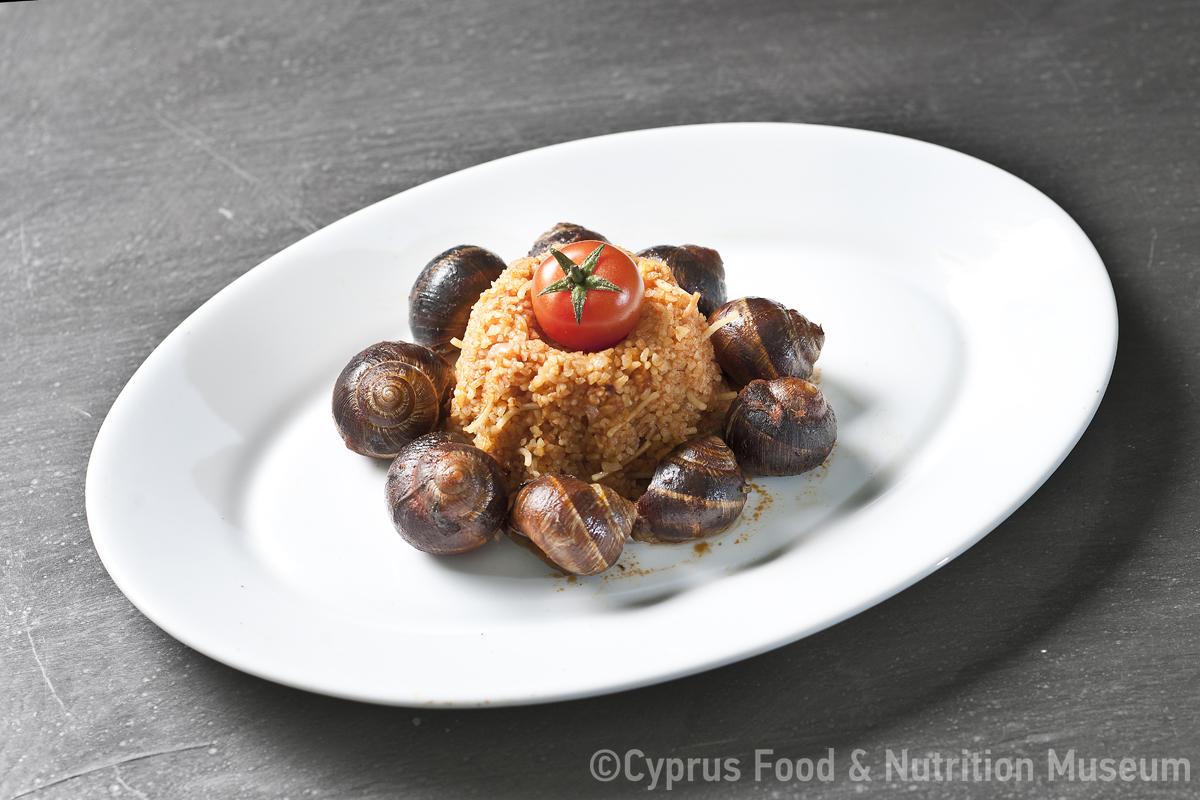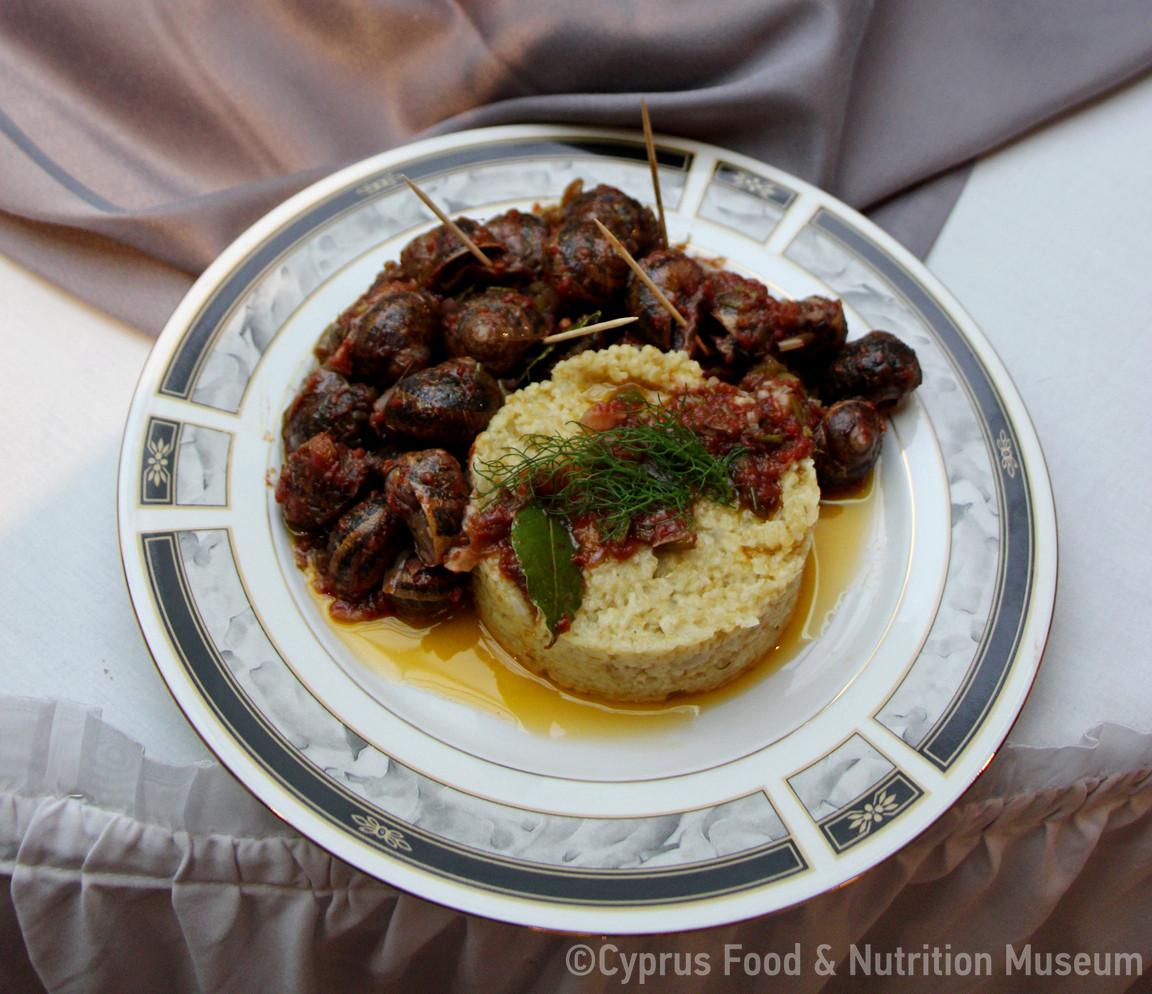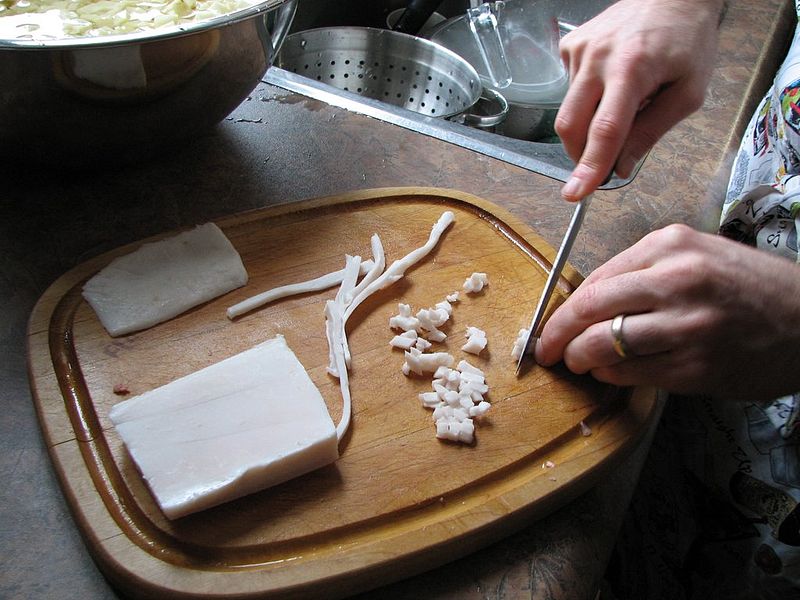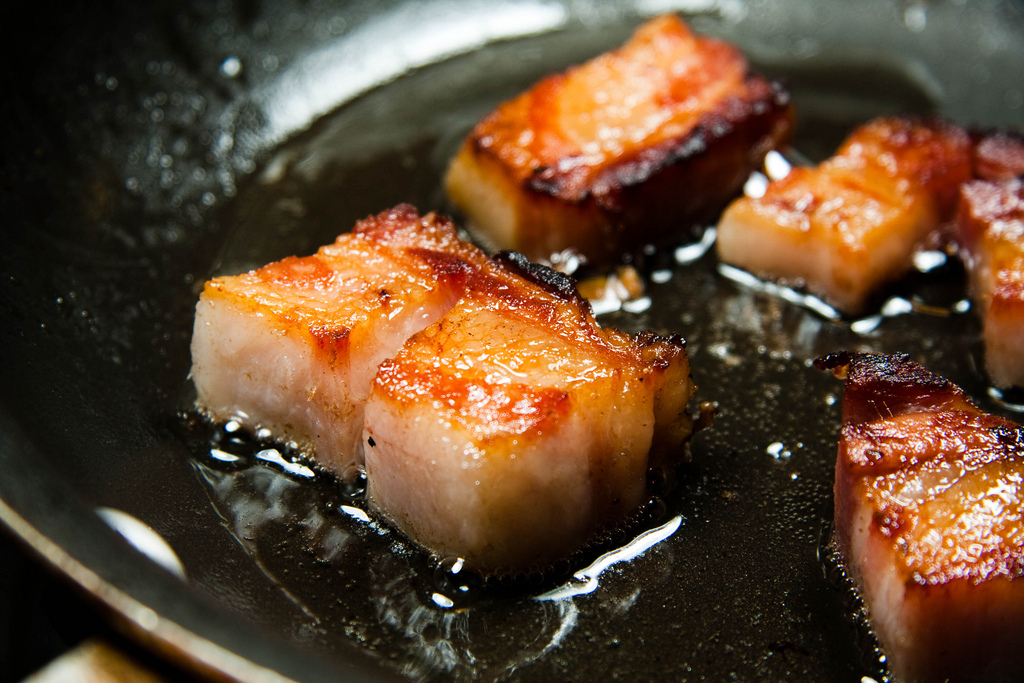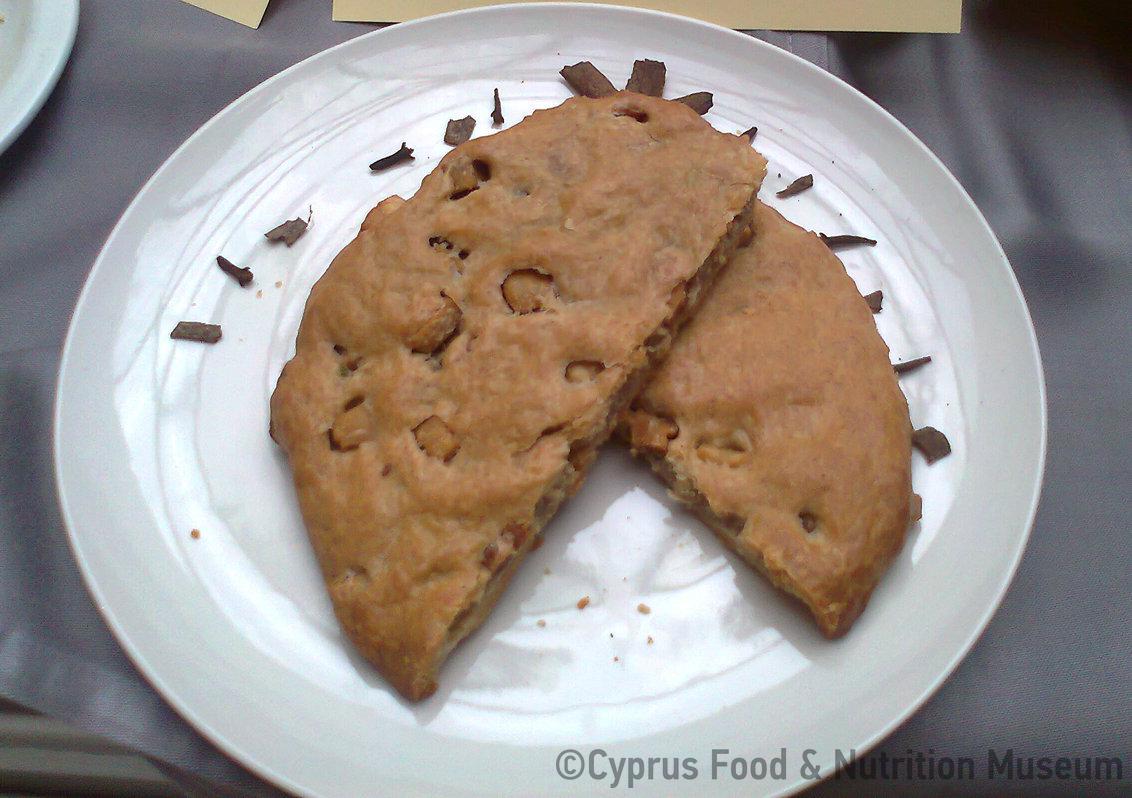Fatty titsiries added to pilaf pourkouri give a special taste and aroma.
Name - Recipe
Pilaf bulgur with small pieces of pork fat.
Titsiries are small pieces of pork fat, the remains of melting pork fat in the pan. PLT < titsiros, i.e., naked, because they are fried to remove all the fat, they are stripped of fat (Kypri 1983 [2003²], article τιτσιρίδες,οι 40)
400-500gr pork fat with a thin layer of meat
1 medium onion
1 glass of bulgur wheat
½ cup of finely chopped vermicelli
2 glasses of water
a bit of olive oil
Cut the fatty meat into small pieces. Put them in a pan without oil to cook until the fat is browned. Remove the oil and collect the browned pieces (titsiries). Finely chop the onion and sauté in a little olive oil, along with the vermicelli. Add the water, the bulgur and the titsiries. Cook over a low heat until it is cooked, i.e. until the water is absorbed. (Testimony of Christoforos Gulielmos, Cooking Cypriot food 2013-2014).
Frying.
Cooking in a pot.
Additional information and bibliography
** Για τις τιτσιρίες γενικά, βλ. λήμμα τιτσιρία,η - τσιρίντζ̆ιν,το στην κατηγορία Τρόφιμα. Για τη συνταγή των τιτσιρίων, βλ. λήμμα τιτσιρί(δ)ες,οι στην κατηγορία Παραδοσιακές Συνταγές.
Kypri T. D. (ed.) (1983 [2003²]), Materials for the compilation of a historical dictionary of the Cypriot dialect, Part B, Glossary of Xenophontos P. Pharmakidou, Publications of the Centre for Scientific Research, IX, Nicosia.
Testimony: Christoforos Goulielmos, 13 years old, student of Kalogeropoulou High School, from the narration of his grandmother Katina, 73 years old, place of origin: Kissonerga, Paphos), in the Cyprus Food and Nutrition Museum 2014, Cooking Cypriot 2013-2014, unpublished data.
Petroula Hadjittofi, Argyro Xenophontos

